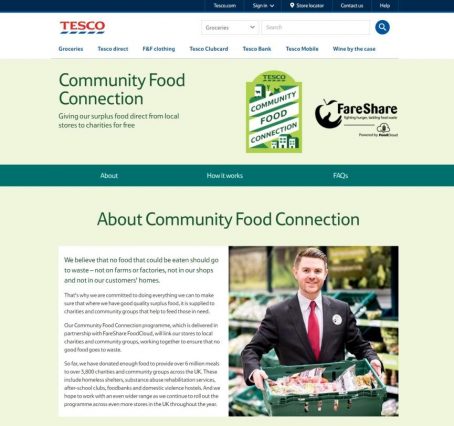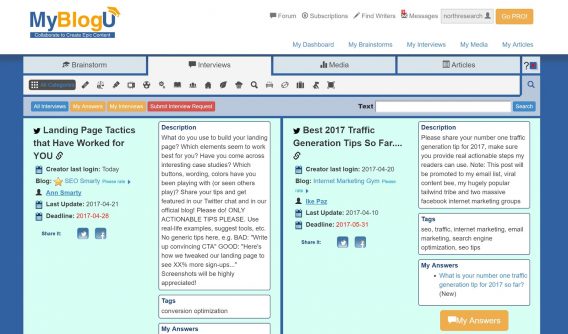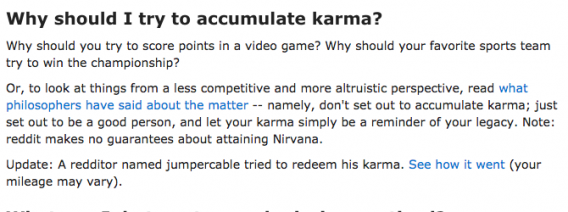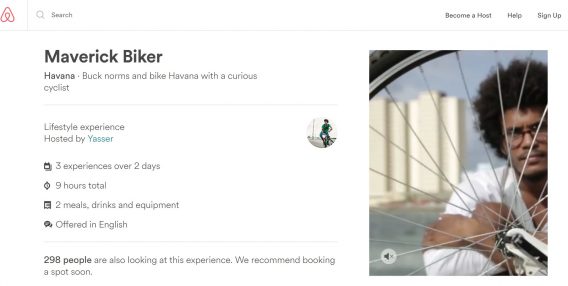According to research by Harvard Business School professor Gerald Zaltman, up to 95% of our purchase decisions are directed by subconscious mental processes.
As digital marketers, we know this intuitively. How many articles have you read that advised you to appeal to the emotional, irrational, subconscious part of the brain?
Despite this evidence, a majority of marketing efforts still focus on making logical appeals to a rational mind.
This approach leads to a sub-optimal user experience and poor conversion rates because it ignores how the human brain actually works.
So, how do we effectively target the subconscious brain? Well, we first need to understand the nature of subconscious decision making, including the role of emotions and the mechanisms that trigger attention.
Table of contents
- How Good is Our Subconscious Brain at Making Decisions?
- How do We Target the Subconscious Mind?
- What are the key implicit motivations?
- Using the Beyond Reason Implicit Motivations for Marketing
- How do we measure the strength of implicit motivations?
- How Can Digital Marketers Apply These Learnings?
- Conclusion
How Good is Our Subconscious Brain at Making Decisions?
A lot has been written about how our decision making is prone to bias, and as a result, people often make poor judgements. While this may be true some of the time, research by Alex Pouget found that people can often make optimal decisions, and usually do so if the choice is made by the subconscious mind.
So, users will trust their gut instinct – because it is often right! This is why if an offer doesn’t come across as credible (e.g. it is too good to be true), visitors will often reject it. Psychologists have also found that the goals which direct much of our behavior are often activated by our subconscious mind.
Neuroscience research has also found that when our subconscious brain identifies a good opportunity to achieve a goal it produces a positive emotion. The brain then automatically triggers a decision to seek goal fulfillment.
The opposite is true when our subconscious brain identifies something that we don’t expect to help us meet an active goal. A negative emotion is triggered and we avoid the behavior associated with that outcome.
Our conscious mind, System 2, on the other hand is much more deliberative and conservative in thinking.
Don’t worry though, it only tends to be in control when we do mental math or if there is a problem of some kind. System 2 uses up a lot of energy so it gets depleted easily.
That’s why marketers should be ruthless with removing clutter on a website and create an intuitive design. A design that is easy and simple to navigate does not activate System 2 and so the user’s mental energy does not get depleted so rapidly.
Do we buy what we like or like what we buy?
Neuroscience research by Gregory Berns and Sara Moore from Emory University found subjective likability is a poor indicator of sales.
Instead, activation of the brain’s reward center was much more predictive of future sales than subjective likability. It’s true that we like what we buy, not buy what we think we like.
So how do you increase online sales? Target the subconscious.
How do We Target the Subconscious Mind?
To target the subconscious brain, we have to communicate that our brand meets implicit or psychological goals that activate our reward center.
When this happens, we trigger an emotional response which leads to a quick decision. When there is no strong emotion involved, we are more likely not to make a decision – at least immediately.
So, what kind of psychological goals do people have? It’s complicated, but many of these goals relate to protecting us from harm or building strong social ties. Indeed, our brain is hard-wired to make decisions that optimize our survival chances. That’s why we find movement on a screen so distracting. We can’t stop ourselves looking towards a moving object as in the past it could have signaled potential danger.
Whatever the motivation, we almost can’t help ourselves when we see an opportunity to achieve such a goal .
“Implicit motives determine which actions are experienced as rewarding and satisfying,” said Joachim Brunstein, Professor of Psychology at the University of Giessen. “Goals that do not align with implicit motives, cannot bestow feelings of reward or satisfaction.”
One benefit of identifying your visitors’ most important implicit motivations is that you can include relevant psychological goals in your value proposition and content to improve engagement and intent.
What are the key implicit motivations?
Marketing consultancy Beyond Reason has developed the first comprehensive model of implicit motivations by combining insights from a number of psychological and neuroscience studies. The model has eight overriding implicit motivations, each of which is then broken down into four individual motivational categories. The eight implicit emotions are:
- Certainty
- Individuality
- Belonging
- Recognition
- Physiology
- Sexuality
- Self-Development
- Power
Each of the thirty two categories also has four expressions/manifestations to enable marketers to identify the detailed nature of each motivation category.

This model, in its precise level of detail, avoids the ambiguity that many traditional behavioral models suffer from. Marketers get clear feedback on how to craft messages to engage the subconscious mind.
What follows is a number of examples outlining the effective use of these implicit motivations on the web.
Using the Beyond Reason Implicit Motivations for Marketing
1. Certainty
We hate uncertainty and so if your brand stands for stability, safety, security, reassurance and righteousness this can be appealing to certain segments.
The internet is full of uncertainty and so brands that communicate longevity and stability have an advantage over sites that are unknown and lack credibility.
For example, the UK retailer Marks & Spencer effectively communicates longevity and tradition by prominently displaying the date it was established (EST 1884) immediately below its logo. This is a subtle, but effective way of demonstrating that it represents tradition and certainty.
The Co-operative Bank uses an ethical business policy to appeal to our desire for righteousness. Treating people fairly by operating according to standards of morality and justice can sometimes be important implicit motivation in sectors such as banking and investment management.
People like to feel that their actions are not harming other people as this gives us a positive emotional response.
2. Belonging
People are extremely social animals. We love being part of a group, community, or team. This implicit motivation includes relatedness (attachments), collaboration, conformism, and empathy.
Tesco demonstrates a desire for empathy and compassion for people less fortunate than ourselves through their Community Food Connection initiative. This aims to deliver surplus food from stores to local charities for free.
Another great use of this trigger comes from MyBlogU.
What they do particularly well is to facilitate collaboration through forums and ask for feedback from other members. Collaboration is important to people because it helps members realize their goals through the group structure. We also like to be part of groups because it makes us feel more secure as members can protect and support each other.
Lifehack.org uses a desire to conform to established norms of behavior to persuade users to sign up to its newsletter.
It seeks a small commitment by asking users if they agree on something (“it’s never too late to start over.”)
Visitors who agree with this question are then served a second pop-up asking for an email address. Users feel compelled to sign up due to the inherent power of consistency/commitment, one of Robert Cialdini’s six principles of persuasion.
3. Recognition
Humans like to be perceived as valuable and appreciated by others. This motivation includes being noticed by others and feeling respected.
Quora allows answers to be edited and organized by its community of users. However, the site also ticks a number of implicit motivations that encourages user participation.
Members get attention as the site displays how many views an answer receives, and users can show appreciation or not by upvoting and downvoting answers.
The notifications tab allows users to keep track of how well their contributions to the community are received.
This same trigger is what drives user behavior on Reddit to a large extent – the ever present pursuit of Reddit Karma.
Amazon has created a brand which works on paying attention and listening to customers. After each purchase, Amazon emails customers to rate the service received. As well as making customers feel their opinions are important it also provides Amazon with reviews for their website which displays strong social proof.
4. Individuality
Individuality the feeling that we are independent thinking and can act according to our own free will. This is defined as being original, the master of our own destiny, having autonomy and being self-centered.
Airbnb has been a massively disruptive force in the hospitality and travel sector in recent years. However, Airbnb’s competition with traditional hotels is overstated, as the average Airbnb stay is 2.5x longer than the average hotel stay.
This is because Airbnb appeals to the non-conformist traveler who wants to wants to experience the real essence of a city or neighborhood. To capitalize on this implicit goal Airbnb created lifestyle experiences. The example below is for “Maverick Biker,” a package designed for the curious cyclist who wants to visit Cuba.
One way of appealing to our self-centeredness is to allow customers to customize your product. For example the footwear company, Converse does this well by letting users customize their shoes. They also allow customers to have their name printed on the final version.
5. Power
The desire to have influence and persuasion over others. This involves having authority, a hierarchy, competition, and prestige.
Online gaming sites use power and the desire for mastery to motivate users through a number of strategies, including competition with other players and leader boards. Zynga, for instance, also allows users to play against friends on Facebook, and it uses levels to communicate progress and the competence of players.
Virgin Atlantic uses prestige to promote its first class service and airport lounges by comparing their Clubhouses to a private members’ club. This creates the impression of exclusivity, but also of power and influence.
6. Self-development
This motivation relates to self-improvement and includes understanding of how mechanisms work, altruism, critical questioning, and purpose.
The Farnam Street blog is a great example of a website that is focused on helping people broaden their knowledge and improve how they think. These benefits are explicitly communicated. However, the site also targets our subconscious desire for a more meaningful and purposeful existence. This is one of the most powerful motivations that people can have.
7. Sexuality
Sex is, of course, one of our most basic motivators. It helps to ensure the continuation of our species. But importantly, it is also about intimacy, lust, and the parent-child bond.
Parents are strongly motivated to strengthen the relationship with their children and brands can often convey this more effectively through imagery rather than words.
Netflix communicates the parent-child bond on their homepage through a powerful image that needs no words.
IKEA’s homepage is also a great example of communicating the parent-child bond. The headline and image resonate strongly to any parent thinking of shopping at IKEA. It also highlights the important social benefit of collaboration by emphasizing the enjoyment family members get from cooking together.
8. Physiology
Apart from the basic need for adequate nutrition, physiology also includes avoiding injury, promoting behavior that maintains good health, and a desire to live in non-polluted environments.
The Zombies Run game uses gamification and social proof to promote a healthier and more active lifestyle.
It allows users to create their own story while they walk or run to prompt more frequent exercise. The app also aims to encourage users to run for longer periods of time than they might otherwise have done.
How do we measure the strength of implicit motivations?
Because implicit motivations work at a subconscious level, traditional self-reporting surveys and direct questioning of respondents does not measure them accurately.
Instead, companies working in this field use research methods such as the Implicit Association Test (IAT).
The IAT measures the speed with which people can sort words or images into categories each time they are “primed” or presented with a stimulus (e.g. a brand logo or product). It is also the test that is used to measure possible racial or gender bias.
When people are primed with a word or image, the associations they have with that concept are much more easily accessible than feelings that are not associated with the stimulus. It teases out implicit associations
This means the IAT can measure emotional feelings to brands, products, and services that users won’t or can’t express through direct questioning. One big advantage of the IAT is that it is scalable and relatively cost effective because it uses computer software to carry out the test.
(Editor’s note: there’s no lack of controversy surrounding the validity of the IAT’s validity. Investigate and decide for yourself.)
How Can Digital Marketers Apply These Learnings?
Our brains analyze the difference between the pain (i.e. the price) and the reward (i.e. achieving goals) when considering a decision.
When the difference is sufficiently large and a net positive, we will be open to purchasing a product. The net value can be changed by increasing the expected reward (i.e. improve the benefits or performance of the product) and/or reducing the pain (i.e. lower the price or make it easier to purchase).
This means that optimizers should focus on simplifying the decision making process. You can do this a variety of ways, but it starts with understanding the implicit motivations of your users. Are they seeking power, self-development, individuality? Are you echoing these sentiments in your copy, your value proposition, your design?
Furthermore, are you creating dissonance with your messaging? If you’re not aligning your messaging with that which your users expect, there’s an inherent divide (which isn’t helping your conversion rate).
The goal here is to produce messaging that caters to System 1 – the fast and intuitive brain. If not, your users will shift to System 2, which is often less rewarding for them and less effective in the sales process.
That’s not to say the rational side needs to be thrown out entirely – products meet rational needs while brands help us meet psychological motivations. Especially with more generic products and services (e.g. hosting sites), your brand can use psychological motivators to differentiate from the competition.
But it all starts with understanding your users. There are many research methods available for this, and we’ve covered them extensively. If you’d like a primer, here are a few resources:
- How to Build Robust User Personas in Under a Month
- The Advanced Guide to Qualitative Research
- Empathic Design: Mapping Your Brain, Brand, and Data
Conclusion
Attention, preferences, and loyalty are most strongly driven by our subconscious mind, but it’s still important to have a strong rational motive to purchase. So to wrap up:
- Ensure rational benefits are aligned to a customer’s implicit goals.
- Simplify the user’s decision making process to retain attention and build satisfaction and loyalty.
- Do extensive user research to uncover motivation and intent.
- Try implicit association tests instead of directly asking users what their motivations are.
- Continue to research and experiment with this. Just like user personas, this is an evolving model and accuracy improves with time and insight.
- Use implicit motivations to form the basis of hypotheses for building more successful online experiments.
























Nice article, Neal. You’ve obviously done your homework. The IAT is a good tool, but has limitations in terms of the number of attributes that can be assessed practically in any one study. We have developed an implicit measurement approach (IE Pro Technology) adapted from Payne’s Affect Misattribution Procedure (AMP). It’s just as valid and reliable (if not more) and improves flexibility. You can learn about it at emotiveanalytics dot com, then click IE Pro YOU. You can also read more about subconcious, implicit, System 1 applications in our latest blog at our website – just go to blogs and read the one about Dual Process, System 1-System 2 branding. Thanks.
Excellent article Neal!
What a great article! The fact that psychology based marketing is still fighting its way through is upsetting though. Businesses still fail to realise the power of the subconscious mind. Sometimes I do see Consumer psychologists and similar titles across organisations, but such roles are still frowned upon. Why that is, do you think? Why psychology based marketing isn’t as popular as it should be?